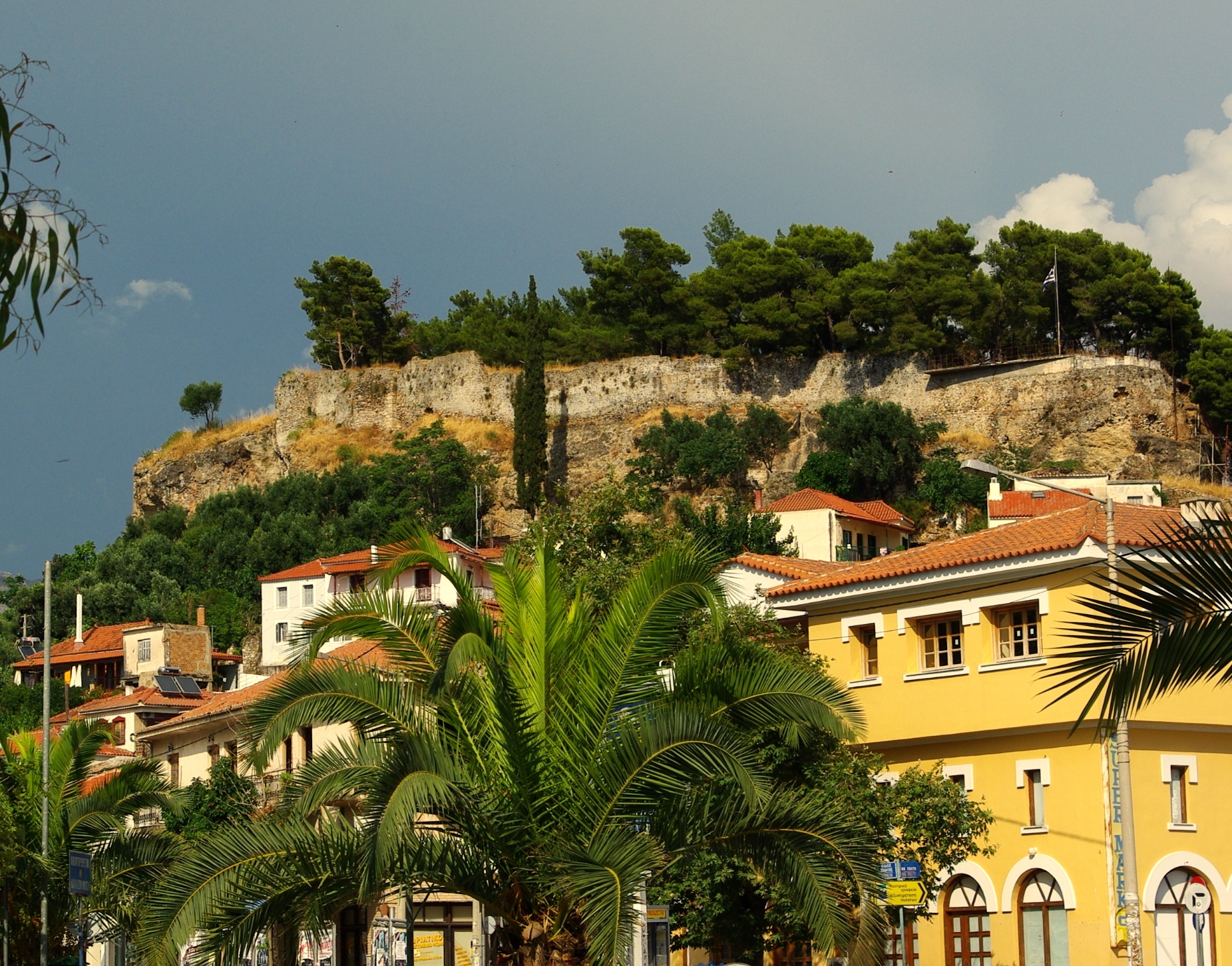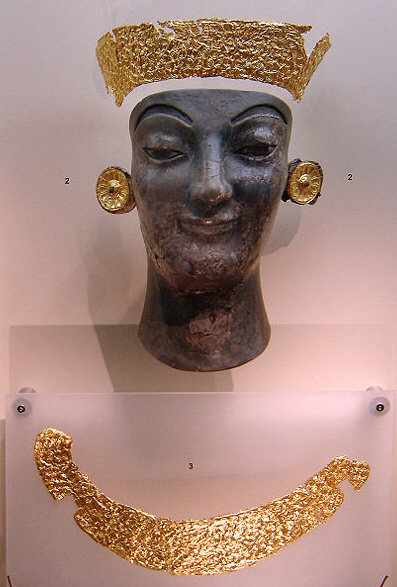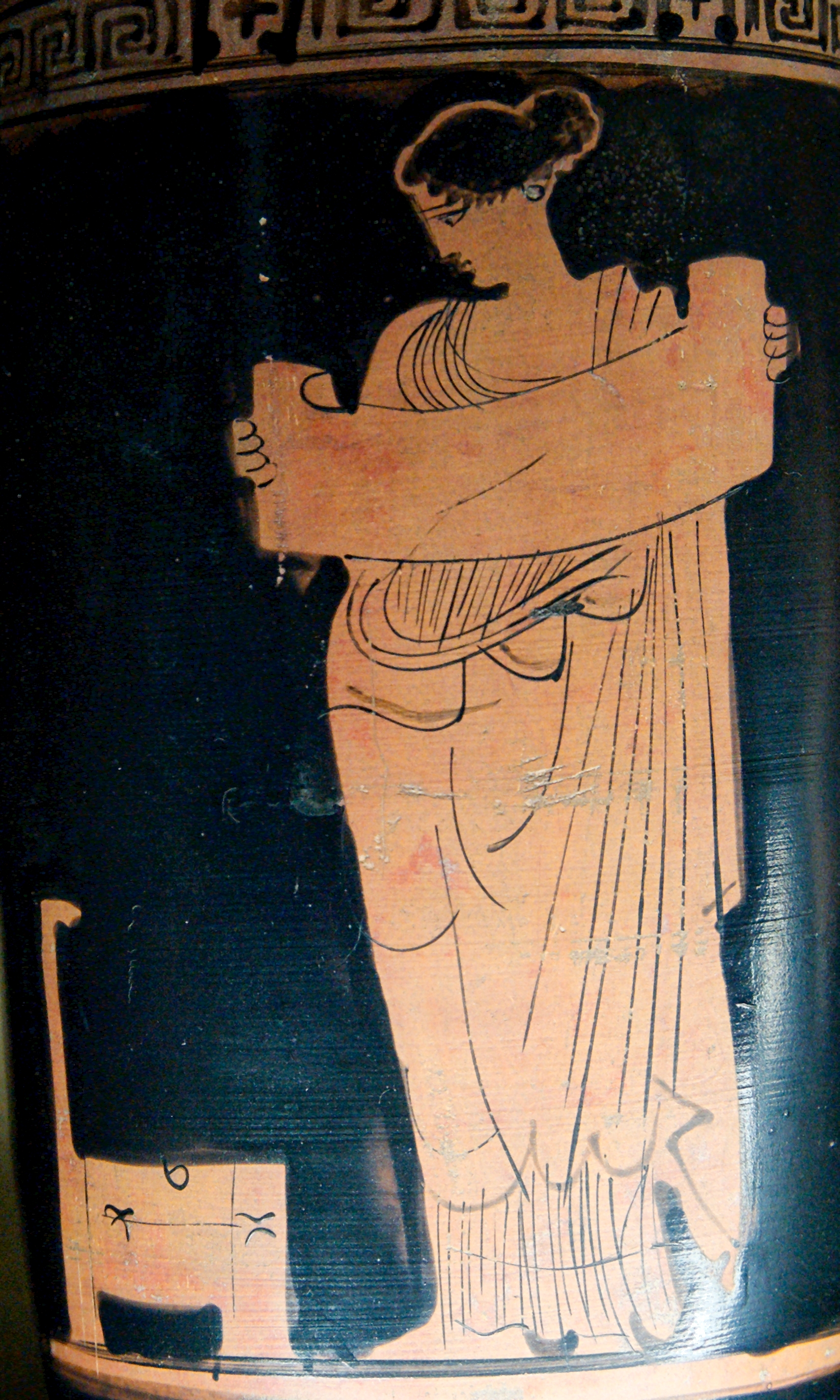|
Ithomaea
The Ithomaia () was the main annual festival of the Messenians in antiquity. Description It was a festival dedicated to Zeus Ithomatas, whose sanctuary was located at the peak of Mount Ithome in Messenia. There was also an oracle there, the base of whose tripod is embedded in the southeastern corner of the Church of the Panagia of Voulkaniotissa, located in the upper monastery of Voulkano, also known as the summit monastery or the katholikon of Voulkano, which was built in the 7th century. The Ithomaia festival included athletic competitions, musical contests, theatrical performances, and various cultural and artistic events. The entire ceremony centered around the chryselephantine statue of Zeus Ithomatas, where the Nine Muses would bathe it in the klepsydra fountain, which still flows with water today. The legendary lyre player Thamyris also participated in the Ithomaia. He sought to compete against the Nine Muses in singing, but in their arrogance, they blinded him. As ... [...More Info...] [...Related Items...] OR: [Wikipedia] [Google] [Baidu] |
Ithome
Mount Ithome (Greek: Ἰθώμη) or Ithomi, previously Vourkano(s) () or Voulcano(s) (), is the northernmost of twin peaks in Messenia, Greece. Mount Ithome rises to about , about over Valyra, the seat of Ithomi, the former municipality. The other peak is Mount Eva (), , connected to Mount Ithomi by a thin ridge long. Mount Ithome is north of Kalamata on the Gulf of Messenia, east of Pylos, seat of Bronze Age Messenia, and north of Messini, modern namesake of ancient Messene, nestled under the cliffs of Mount Ithome. From the top the whole valley of the Pamisos river can be viewed eastward to Mount Taygetus and southward to the Gulf of Messenia. The site is highly defensible and yet off the main road; in this case, the Kalamata-Pylos road. Etymology Ithome Like most ancient names the etymology of ''Ithome'' is not certain. It is also the name of a town in Thessaly, although Reece notes evidence that the one in Thessaly was originally called ''Thome''. Vurkano The pre ... [...More Info...] [...Related Items...] OR: [Wikipedia] [Google] [Baidu] |
Zeus
Zeus (, ) is the chief deity of the List of Greek deities, Greek pantheon. He is a sky father, sky and thunder god in ancient Greek religion and Greek mythology, mythology, who rules as king of the gods on Mount Olympus. Zeus is the child of Cronus and Rhea (mythology), Rhea, the youngest of his siblings to be born, though sometimes reckoned the eldest as the others required disgorging from Cronus's stomach. In most traditions, he is married to Hera, by whom he is usually said to have fathered Ares, Eileithyia, Hebe (mythology), Hebe, and Hephaestus.Hard 2004p. 79 At the oracle of Dodona, his consort was said to be Dione (Titaness/Oceanid), Dione, by whom the ''Iliad'' states that he fathered Aphrodite. According to the ''Theogony'', Zeus's first wife was Metis (mythology), Metis, by whom he had Athena.Hesiod, ''Theogony'886900 Zeus was also infamous for his erotic escapades. These resulted in many divine and heroic offspring, including Apollo, Artemis, Hermes, Persephone, D ... [...More Info...] [...Related Items...] OR: [Wikipedia] [Google] [Baidu] |
Messenia (ancient Region)
Messenia () was an ancient district of the southwestern Peloponnese, more or less overlapping the modern Messenia region of Greece. To the north it had a border with Elis along the Neda river. From there the border with Arcadia ran along the tops of Mount Elaeum and Mount Nomia and then through foothills of Taygetus. The eastern border with Laconia went along the Taygetus ridge up to the Koskaraka river, and then along that river to the sea, near the city of Abia. Ancient Messenia descended continuously without change of name and with little change of territory to the modern Regional Unit of Greece of the same name. History Bronze age The earliest inhabitants of Messenia were thought by the Greeks of the Classical period to have been ' Pelasgians', as in other regions of Greece. Supposedly, the Hellenic tribes had then arrived in Greece, and Messenia was settled by Aeolian Greeks. The Mycenaean city of Pylos has been identified with the modern site of Ano Englianos, in wes ... [...More Info...] [...Related Items...] OR: [Wikipedia] [Google] [Baidu] |
Messenia
Messenia or Messinia ( ; ) is a regional unit (''perifereiaki enotita'') in the southwestern part of the Peloponnese region, in Greece. Until the implementation of the Kallikratis plan on 1 January 2011, Messenia was a prefecture (''nomos'') covering the same territory. The capital and largest city of Messenia is Kalamata. Geography Physical Messenia borders on Elis to the north, Arcadia to the northeast, and Laconia to the southeast. The Ionian Sea lies to the west, and the Gulf of Messinia to the south. The most important mountain ranges are the Taygetus in the east, the Kyparissia mountains in the northwest and the Lykodimo in the southwest. The main rivers are the Neda in the north and the Pamisos in central Messenia. Off the south coast of the southwesternmost point of Messenia lie the Messinian Oinousses islands. The largest of these are Sapientza, Schiza and Venetiko. The small island Sphacteria closes off the bay of Pylos. All these islands are virtua ... [...More Info...] [...Related Items...] OR: [Wikipedia] [Google] [Baidu] |
Chryselephantine Sculpture
Chryselephantine sculpture () is a sculpture made with gold and ivory. Chryselephantine cult statues enjoyed high status in Ancient Greece. Ancient examples Chryselephantine statues were built around a wooden frame with thin carved slabs of ivory attached, representing the flesh, and sheets of gold leaf representing the garments, armour, hair, and other details. In some cases, glass paste, glass, and precious stones, precious and semi-precious stones were used for detail such as eyes, jewellery, and weaponry. The origins of the technique are obscure. There are known examples, from the 2nd millennium BC, of composite sculptures made of ivory and gold from areas that became part of the Greek world, most famously the so-called "Palaikastro Kouros" (not to be confused with the Kouros, Archaic Kouros statues), from Minoan civilization, Minoan Palekastro, Palaikastro, BC. It is likely the only enshrined Minoan cult image that has survived. It is, however, not clear whether the Greek ... [...More Info...] [...Related Items...] OR: [Wikipedia] [Google] [Baidu] |
Muses
In ancient Greek religion and Greek mythology, mythology, the Muses (, ) were the Artistic inspiration, inspirational goddesses of literature, science, and the arts. They were considered the source of the knowledge embodied in the poetry, lyric poetry, lyric songs, and myths that were related orally for centuries in ancient Greek culture. The number and names of the Muses differed by region, but from the Classical Greece, Classical period the number of Muses was standardized to nine, and their names were generally given as Calliope, Clio, Polyhymnia, Euterpe, Terpsichore, Erato, Melpomene, Thalia (Muse), Thalia, and Urania. In modern figurative usage, a muse is a Muse (source of inspiration), person who serves as someone's source of artistic inspiration. Etymology The word ''Muses'' () perhaps came from the Indo-European ablaut#Proto-Indo-European, o-grade of the Proto-Indo-European language, Proto-Indo-European root (the basic meaning of which is 'put in mind' in verb formati ... [...More Info...] [...Related Items...] OR: [Wikipedia] [Google] [Baidu] |
Thamyris
In Greek mythology, Thamyris (Ancient Greek: Θάμυρις, ''Thámuris'') was a Thrace, Thracian singer. He is notable in Greek mythology for reportedly being a lover of Hyacinth (mythology), Hyacinth and thus to have been the first male to have loved another male,Bibliotheca (Pseudo-Apollodorus), Apollodorus, 1.3.3 but when his songs failed to win his love from the god Apollo, he challenged the Nine Muses to a competition and lost. Family Thamyris was the son of Philammon and the nymph Argiope (mythology), Argiope from Mount Parnassus. One account makes him the father of Menippe (mythology), Menippe, who became the mother of Orpheus by Oeagrus. Mythology Early years When Philammon refused to take Argiope into his house as his wife, the girl left Peloponnese and went to the country of the Odrysian kingdom, Odrysians in Thrace where she gave birth to a son, Thamyris. When the boy reached puberty, he became so accomplished in singing to the cithara that the Scythians made ... [...More Info...] [...Related Items...] OR: [Wikipedia] [Google] [Baidu] |
Thrace
Thrace (, ; ; ; ) is a geographical and historical region in Southeast Europe roughly corresponding to the province of Thrace in the Roman Empire. Bounded by the Balkan Mountains to the north, the Aegean Sea to the south, and the Black Sea to the east, it comprises present-day southeastern Bulgaria (Northern Thrace), northeastern Greece (Western Thrace), and the European part of Turkey (East Thrace). Lands also inhabited by ancient Thracians extended in the north to modern-day Northern Bulgaria and Romania and to the west into Macedonia (region), Macedonia. Etymology The word ''Thrace'', from ancient Greek ''Thrake'' (Θρᾴκη), referred originally to the Thracians (ancient Greek ''Thrakes'' Θρᾷκες), an ancient people inhabiting Southeast Europe. The name ''Europe'' (ancient Greek Εὐρώπη), also at first referred to this region, before that term expanded to include its Europe, modern sense. It has been suggested that the name ''Thrace'' derives from the na ... [...More Info...] [...Related Items...] OR: [Wikipedia] [Google] [Baidu] |
Lyre
The lyre () (from Greek λύρα and Latin ''lyra)'' is a string instrument, stringed musical instrument that is classified by Hornbostel–Sachs as a member of the History of lute-family instruments, lute family of instruments. In organology, a lyre is considered a yoke lute, since it is a lute in which the strings are attached to a yoke that lies in the same plane as the sound table, and consists of two arms and a crossbar. The lyre has its origins in ancient history. Lyres were used in several ancient cultures surrounding the Mediterranean Sea. The earliest known examples of the lyre have been recovered at archeological sites that date to c. 2700 BCE in Mesopotamia. The oldest lyres from the Fertile Crescent are known as the eastern lyres and are distinguished from other ancient lyres by their flat base. They have been found at archaeological sites in Egypt, Syria, Anatolia, and the Levant. In a discussion of the Nubian lyre, Carl Engel notes that modern Egyptians call it ... [...More Info...] [...Related Items...] OR: [Wikipedia] [Google] [Baidu] |
Valyra
Valyra ( pronounced ''Valira'') is a small village in southern Greece. Situated on the Peloponnese Peninsula, Valyra was the seat of the Ithomi municipality. Located near the ancient city of Messene, it lies 18 km NW of Kalamata, and about 177 km SW of Athens Athens ( ) is the Capital city, capital and List of cities and towns in Greece, largest city of Greece. A significant coastal urban area in the Mediterranean, Athens is also the capital of the Attica (region), Attica region and is the southe .... References Populated places in Messenia Messini {{Peloponnese-geo-stub ... [...More Info...] [...Related Items...] OR: [Wikipedia] [Google] [Baidu] |
Messene
Messene (Greek language, Greek: Μεσσήνη 𐀕𐀼𐀙 ''Messini''), officially Ancient Messene, is a local community within the regional unit (''perifereiaki enotita'') of Messenia in the region (''perifereia'') of Peloponnese (region), Peloponnese. It is best known for the ruins of the large classical city-state of Ancient Messene. The site was founded in the Bronze Age as Ithome, an ancient city originally of Achaeans (tribe), Achaean Greeks which eventually came under the hegemony of the military state of Sparta with which it had a long struggle. During the latter period many inhabitants went into exile, and eventually it was destroyed by the Spartans and abandoned for some time. After the defeat of the Spartans at the Battle of Leuctra (371 BC), the Thebans invaded the Peloponnese and Epaminondas built the new city of Messene on the site in 369 BC over the ruins of Ithome and invited the return of the previous inhabitants and their descendants. The substantial ruins ... [...More Info...] [...Related Items...] OR: [Wikipedia] [Google] [Baidu] |
Alaric I
Alaric I (; , 'ruler of all'; ; – 411 AD) was the first Germanic kingship, king of the Visigoths, from 395 to 410. He rose to leadership of the Goths who came to occupy Moesia—territory acquired a couple of decades earlier by a combined force of Goths and Alans after the Battle of Adrianople. Alaric began his career under the Gothic soldier Gainas and later joined the Roman army. Once an ally of Rome under the Roman emperor Theodosius I, Theodosius, Alaric helped defeat the Franks and other allies of a would-be Roman usurper. Despite losing many thousands of his men, he received little recognition from Rome and left the Roman army disappointed. After the death of Theodosius and the disintegration of the Roman armies in 395, he is described as reiks, king of the Visigoths. As the leader of the only effective field force remaining in the Balkans, he sought Roman legitimacy, never quite achieving a position acceptable to himself or to the Roman authorities. He operated ma ... [...More Info...] [...Related Items...] OR: [Wikipedia] [Google] [Baidu] |







